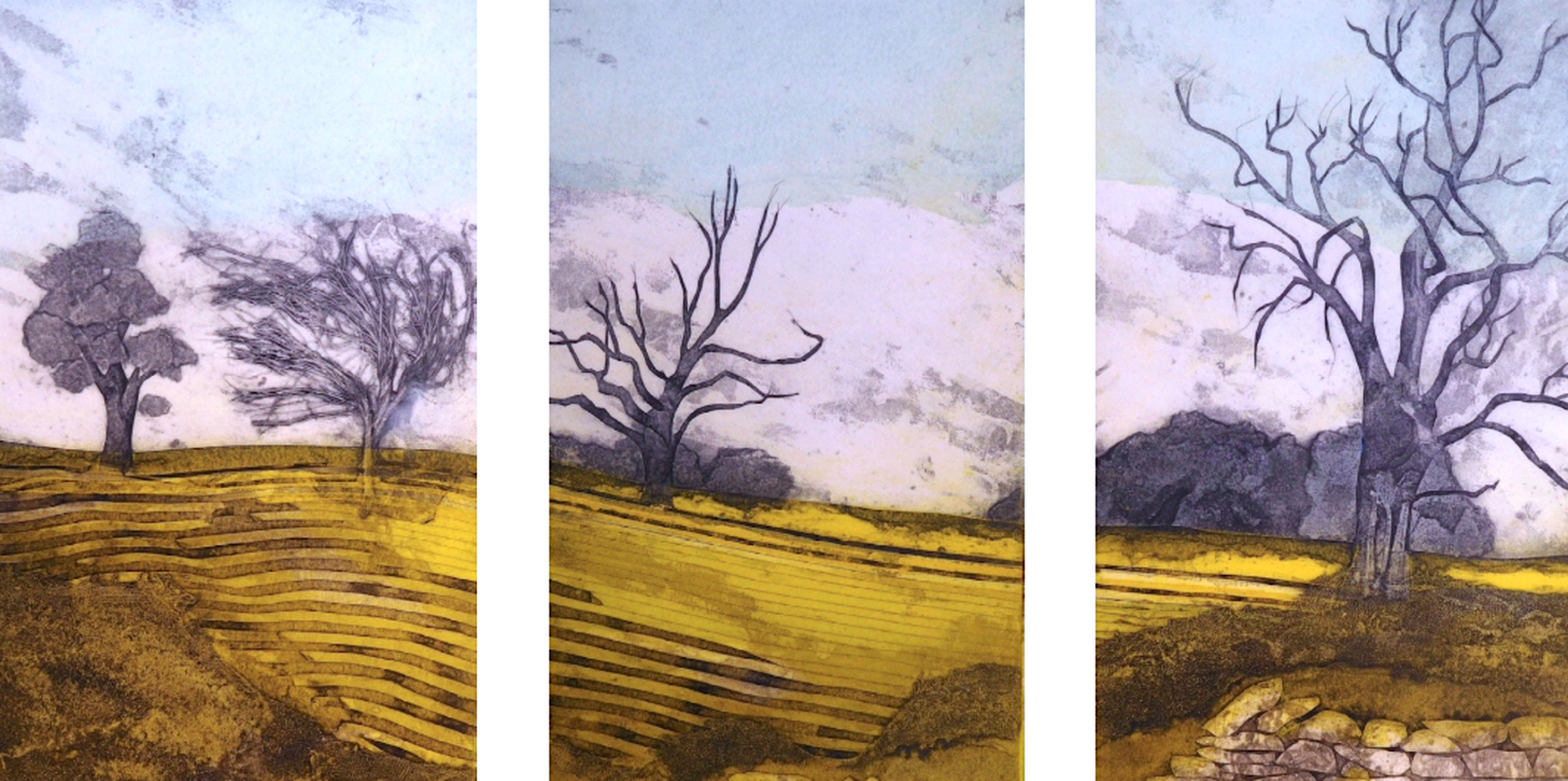
SARAH ROSS-THOMPSON AND THE ART OF COLLAGRAPHED PRINTS
I interviewed artist Sarah Ross-Thompson whose exceptional Collagraphed prints use fabrics, lichen, porridge and string to create images of the dramatic Scottish Highlands where she

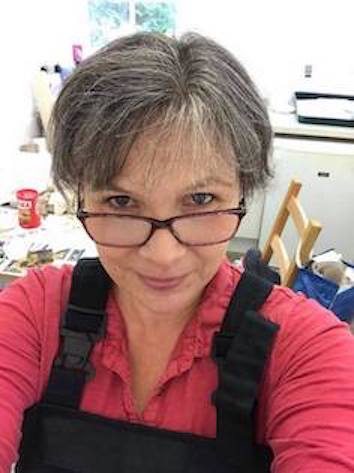
I interviewed artist Sarah Ross-Thompson whose exceptional Collagraphed prints use fabrics, lichen, porridge and string to create images of the dramatic Scottish Highlands where she is based. Sarah has also exhibited at the Scottish Royal Academy and illustrated book covers for Little Brown and Birlinn Books.
Leslie: Can you tell us about the printing process you use and why it particularly suits (or guides) the art prints you make?
Sarah: I am a printmaker specialising in Collagraph printmaking. I use collage printing plates constructed out of a base of mountboard. I can work into the surface of the card, peeling and scoring with a scalpel or I can add materials such as fabrics, lichen, porridge oats and string to the surface. This means that the technique is both additive and subtractive in nature.
When I was art college and first explored the medium of printmaking it immediately appealed. I like the process-based nature of printmaking which plays to my crossword puzzle loving mind. As a natural problem solving, deciding the best resolution to each image is a pleasurable process.
The other advantage of printmaking is the fact that it is very finite. When the design has been constructed, the plate is made. When the plate has been sealed it can then be inked. Once it has been inked, it goes through the press and the job is done. I don’t think I could cope with the angst of a painting where I had to decide whether it was finished or not.
Leslie: What would be the key points you would make students aware of about the technical aspects of producing hand-inked, collagraph prints?
Sarah: As mentioned, printmaking is very processed-based. It is important to have a moderate competence level at all the different stages to be able to create a good print. Being good at the design element but not being able to translate that into a useable printing plate will result in a substandard print. Equally, having the most perfect printing plate but not being able to ink it up will also produce unsatisfactory results.
Having the right equipment is also primary to printmaking. The right materials to make the printing plate, be it metal for etching, lino or mount board. The correct inks for the correct job, relief or intaglio and the right kind of press… book press or etching. Without the right equipment the finished prints will always be compromised.
There are so many different types of printmaking, screen, lithography, woodblock, collagraphy… and each require different skills. My technique requires a lot of sensitivity to touch… being able to feel the plate and ink up the fragile materials appropriately. Other forms of printmaking which requires rollers might not need quite the same level of sensitivity in the department but would require a good handling with the roller.
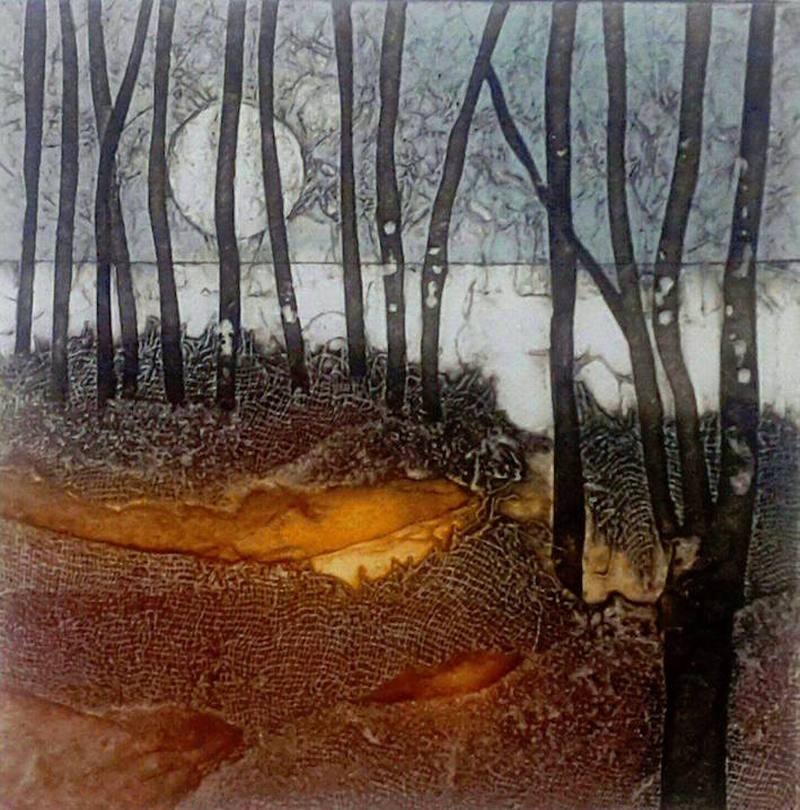
Leslie: How do you use “… string, salt, corrugated card, porridge oats and lichen,” in your artistic process? Is the process of collection random, deliberate or part of what shapes the artwork?
Sarah: String, salt, corrugated card and porridge oats are just some of the ‘ingredients’ for making my collage plates. I choose materials for their textural qualities. A rough material will trap a lot of ink creating darks within my prints. Shiny materials such as PVA glue and tissue will resist the ink and become lighter areas or white.
I also choose the materials for their visual appearance, scrunched tissue and some anaglypta wallpapers make excellent water effects whilst corrugated card could be a barn roof or a tree trunk.
Leslie: Could you describe your “… recognisable thumbprint or style,” and how being self-taught has helped you to develop it?
Sarah: My ‘thumb print’ or unique signature style came about mostly through the medium I use. People will recognise my handling of my favourite ‘ingredients’ of porridge oats and lichen or just the use of colour. I only have about eight tubes of ink and blend all my colours from these. This means that my palette is also quite recognisable. Being self-taught means that discovering new materials and how to handle them is always ongoing and I am not reliant on information I learned at college. I think often people can stall after completing a course and not have the skills to progress fully on their own without guidance.
Leslie: Tell us about some of your artistic milestones and how they changed you and your art.
Sarah: After my house fire in 2015 my first two pieces were called Silver linings and Blaze of Glory. I entered both these pieces into the Scottish Royal Academy Winter exhibition that year and both were accepted. Some of my pieces are inspired by travels and I often find images with a personal connection work best, capturing a bit of me and how I felt when in that location. Another popular piece was based on watching the sun go down on a Mexican beach with a fellow printmaker.
Having always been a fan of a drystone wall I was thrilled when the Publishers Little Brown contacted me to ask permission to use one of my images for a memoir by a drystone waller. I feel if they were happy to use the image on a book about drystone walling then I must have got something right. Following on from that book cover I was asked by an Edinburgh publisher, Birlinn Books to create the cover for Patrick Laurie’s Native. I have since created two more covers for them.
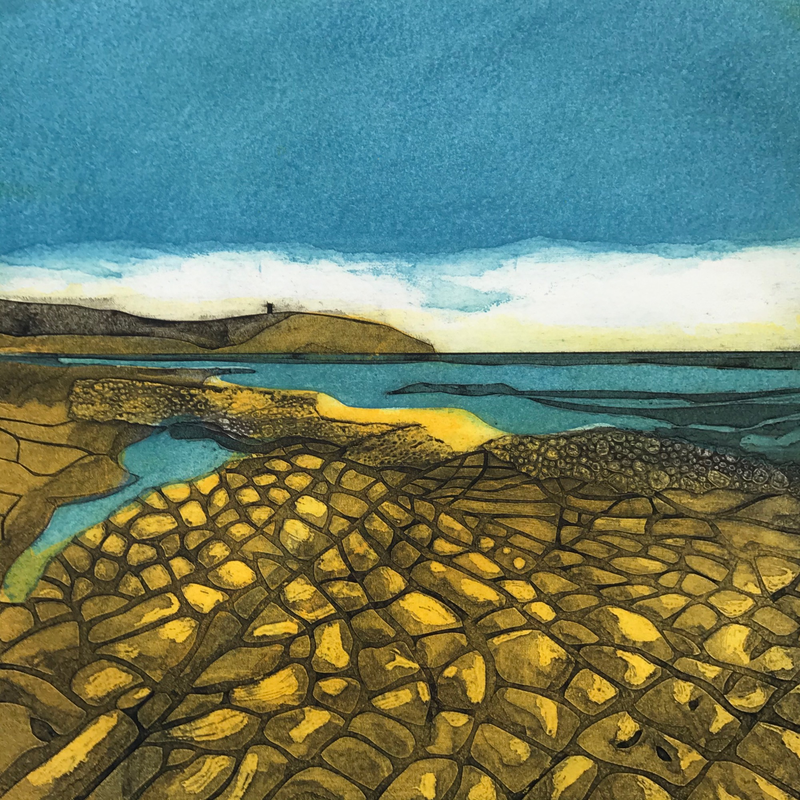
Having done three tours to Mexico, Australia and recently Canada to share my techniques, I see travel as an important adjunct to my work. I pick up visual inspiration as well as meeting some incredible fellow artists along the way. It is fascinating how different cultures view and handle printmaking.
Leslie: Tell us about the differences you found as a working artist between Southern England and the Scottish Highlands.
Sarah: I guess there are more similarities than differences to my mind. Working as a full-time artist is always going to be a fair solitary existence wherever you are based. Long, lonely hours in the studio with the music blaring. I have learnt to compensate for this with an active social media presence which both brings my art to others and gives me a huge support network outside the house.
The biggest difference in my relocation from England to Scotland and then from Argyll to Dumfries and Galloway is the difference in the geography. As a primarily landscape based artist, moving from rural England to mountainous Scotland and more recently to a house overlooking the Irish Sea, provides different visual challenges. A change in the materials I used to represent the elements in my collagraphs and also a shift in palette was required.
Leslie: What gives you joy in your art?
Sarah: I guess I consider myself very lucky to have a talent which is very personal. To have something which is uniquely mine. Whilst being self-employed has its hardships it is also wonderful to be the one who calls the shots. To be honest so many things about being an artist bring me joy…from winning a prize for best body of work at a recent Print Fair, to sharing a project with my son whose book I am illustrating.
ABOUT LESLIE TATE’S BOOKS

I interviewed artist Sarah Ross-Thompson whose exceptional Collagraphed prints use fabrics, lichen, porridge and string to create images of the dramatic Scottish Highlands where she
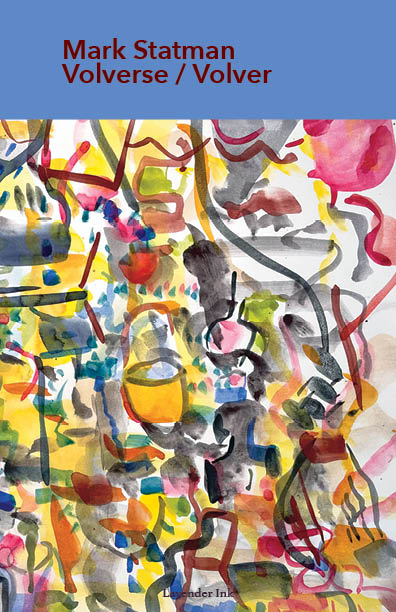
Part 2 of my interview with Mark Statman looks closely at Mark’s Latin American poetic influences, his life in Mexico and ends with an extract
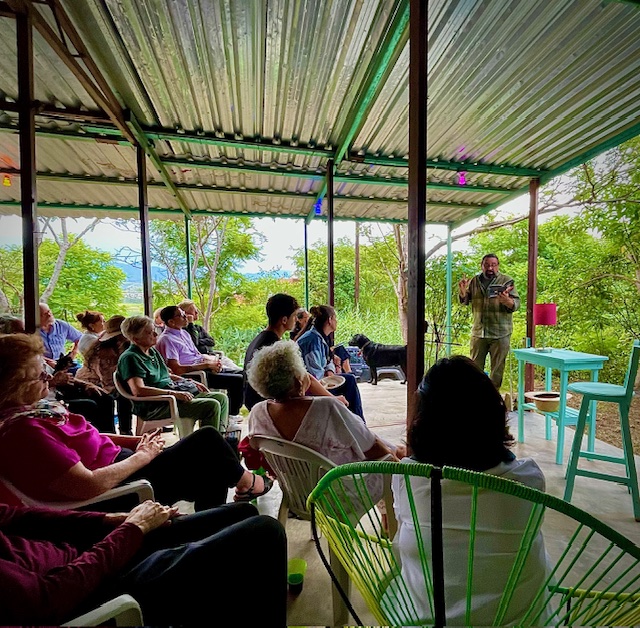
I interviewed international poet and translator Mark Statman about Volverse/Volver, his 14th published collection. Mark, who has won national arts awards, is Emeritus Professor of Literary
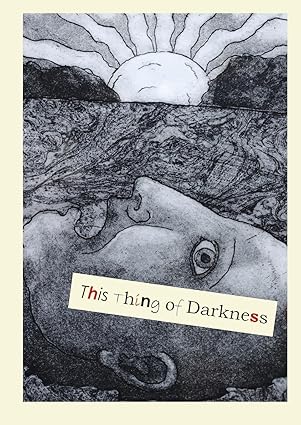
I interviewed Lisa Dart, finalist in the Grolier, Aesthetica and Troubadour Poetry Prizes and author of The Linguistics of Light (poems, Salt, 2008), Fathom (prose
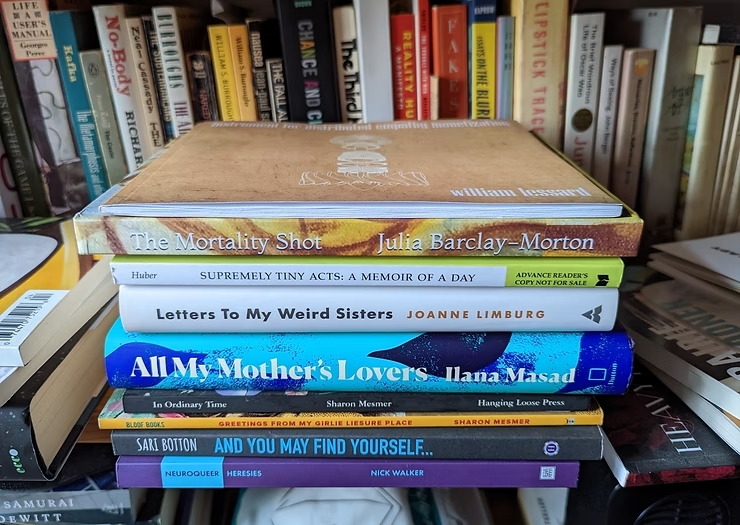
I interviewed writer Julia Lee Barclay-Morton about her experience of autism. Julia began as an experimental dramatist in New York, moving to the UK to
| Cookie | Duration | Description |
|---|---|---|
| cookielawinfo-checkbox-analytics | 11 months | This cookie is set by GDPR Cookie Consent plugin. The cookie is used to store the user consent for the cookies in the category "Analytics". |
| cookielawinfo-checkbox-functional | 11 months | The cookie is set by GDPR cookie consent to record the user consent for the cookies in the category "Functional". |
| cookielawinfo-checkbox-necessary | 11 months | This cookie is set by GDPR Cookie Consent plugin. The cookies is used to store the user consent for the cookies in the category "Necessary". |
| cookielawinfo-checkbox-others | 11 months | This cookie is set by GDPR Cookie Consent plugin. The cookie is used to store the user consent for the cookies in the category "Other. |
| cookielawinfo-checkbox-performance | 11 months | This cookie is set by GDPR Cookie Consent plugin. The cookie is used to store the user consent for the cookies in the category "Performance". |
| viewed_cookie_policy | 11 months | The cookie is set by the GDPR Cookie Consent plugin and is used to store whether or not user has consented to the use of cookies. It does not store any personal data. |